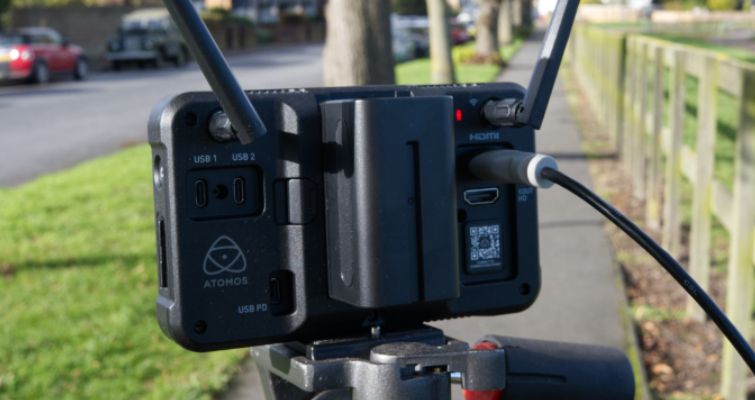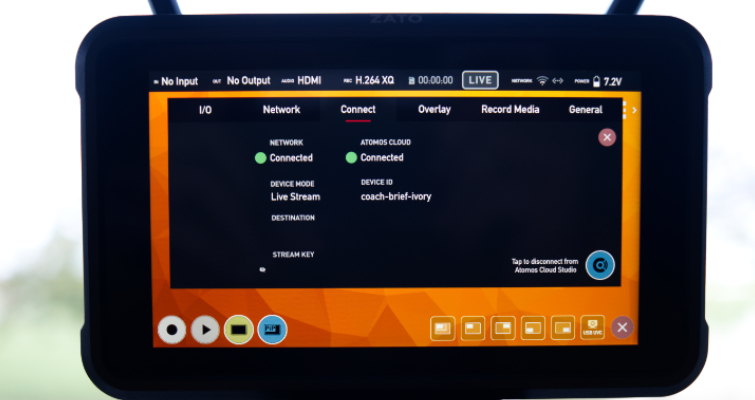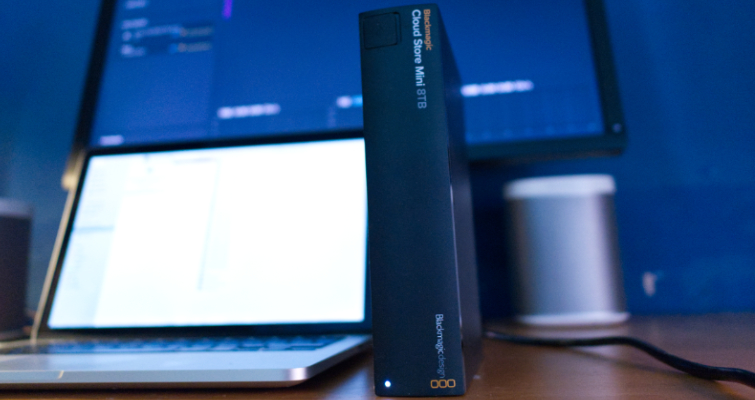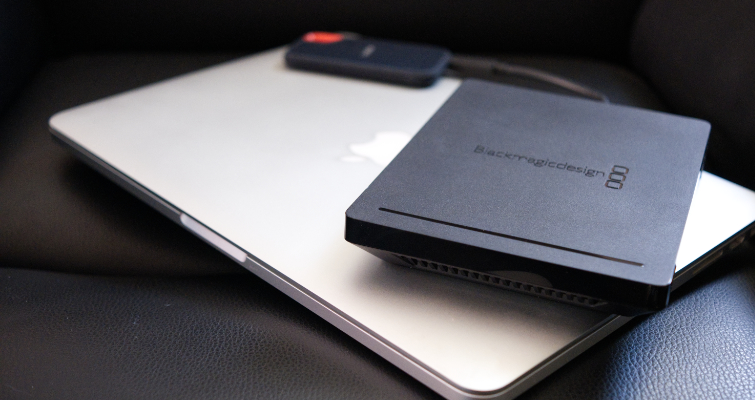
Camera to Cloud: The Continued Evolution of Video Production
The way we connect our workflows is ever-changing, and collaborating remotely within the Cloud is vital. Here’s what you need to know.

Do you remember when sneakernet was a colloquial term that united tech luddites against the gathering force of “the network?” We were proud to mock nascent network technology by pointing out how much faster it was to hand-deliver a drive/disk/zip to someone rather than just dump its contents on a dodgy network and, you know, hope for the best.
That was then. This is now. Reluctance to embrace a frail intranet has been replaced with a demand for lightning-fast global delivery. Camera to cloud technology is here and our reliance on network efficiencies is total. Long gone are the days when remote working was a rare perk enjoyed by the few. Today, it’s a common day-to-day culture for many.
Going permanently remote is 100% a thing now. As such, so is remote collaboration. So, how does this affect content creators? The truth is dependent on two things—speed and size—plus two questions you can only answer for yourself: Do I actually need to collaborate? And, if so, at what level?
If you have to send media, how large that media is directly impacts how quickly you’re going to get it there. But, you’re already using services like iCloud, One Drive, My Drive, and/or Dropbox to send large files. How much more collaboration do you need or want?
Do I Need the Cloud?
Whether you’re conscious of it or not, we’re all rushing toward thin client computing where processing is done mostly in the cloud. To drill down to why you may need some kind of Cloud collaboration is to examine your business model and imagine that this type of service might earn you more money.
For instance, say you just bought a camera that records and exports high-resolution video, but you haven’t got time to learn how to edit or grade the footage. You may know a video editor who has fast storage, an eye for a swift edit, and can work with a deadline. How can you deliver the footage when you could be talking about sending gigabytes of data?

Rather than a dumb file dump like FTP, an intelligent Cloud transfer service may be the answer. One that will get smaller proxy files to a destination quickly, while also having a plan for your original camera files to join them (albeit not immediately). Now, imagine sending video files while they’re still being recorded. That’s where the technology is today.
Just to put this new type of remote collaboration into context, at the end of last year, Fujifilm announced its first camera-to-cloud add-on for its new X-H2s camera. The hardware bolts onto the bottom of the camera and provides WiFi and Ethernet connectivity, as well as extra battery capacity. Due to the camera’s hybrid performance of stills and video, you can see how helpful this ability would be.
New Ways of Working
The Fujifilm add-on will work with one of Adobe’s recent purchases, Frame IO. This is a cloud collaboration product that Adobe bought for around $1B last year, mostly aimed at the film and television market. (More about this below.)
The involved parties say that once you start working this way, you will never go back. They also say that, when you take the idea even further, you’ll see the end of camera cards altogether. This could happen in less than a decade, but would you ever dare to go out without any media in your camera?
However, there are essential restrictions. Nobody is talking about only sending original camera files over the public internet. You will be sending proxy files, which are lower resolution versions—usually 1080 resolution files at 30p.
Then, you’ll pair-up with the originals at a later date and swap them out in the edit. But interestingly—and, in some situations—the proxies will be good enough.
Better Cloud Services

A quick search shows how many cloud storage services have sprouted up in the last few years—and they’re cheap. All of these have granular sub-folder abilities and sharing options with permission structures for security.
There’s Google Drive—15GB for free, 100GB for $1.99 a month. The team’s Standard plan from Dropbox offers 3TB for around $18 a month. iCloud gives you 2TB for around $9.99.
Then there’s WeTransfer (which doesn’t seem all that media savvy, but does offer storage solutions), as well as companies like pCloud.
But, there are also new services that are being driven by the video world, as they have to deal with increasingly high-resolution formats and generational increases in content. They have collaboration at their core.
One of the companies maturing basic internet file sharing into something resembling collaboration is the previously mentioned Frame IO. The company was bought by Adobe to primarily offer further options to the customers of Creative Cloud (and to keep that subscription train running while keeping churn at bay).
Manufacturers have finally realized that remote collaboration, while great, needs a whole lot of “glue” to make it work effectively. Atomos and Blackmagic Design have both launched collaborative Cloud services designed to slot easily into the well-worked practices and philosophies that helped make them the companies they are today.
Atomos Connect
The Atomos line of Connect products includes recorders that have built-in connect hardware and hardware that can be strapped to existing recorders to enable connectivity.
At the lower end is the Zato Connect, followed by Atomos Connect, which is the module for the existing Ninja V and V+ recorders. It connects on the unit’s expansion port and enables connectivity via Wifi 6 and Ethernet.
At the higher end is a new fully-integrated product, the Shogun Connect. This has a larger screen with all the new connectivity built in.
The Ninja with Atomos Connect and Shogun Connect support the camera-to-cloud ability and are ratified to work with Frame IO’s service. The Zato should have that soon, too.
In between Atomos and the many connected options is Atomos’ own Cloud Studio. This is where you initially pair your device up. In effect it’s like a hub, as you then choose what service you’re after whether it’s straight streaming, camera-to-cloud, or something else.
You can see Atomos’ thinking. Having a cloud base that they control allows you to design hardware on the ground that connects easily. They’re even talking about “dumb” boxes in the future without screens. This basis allows firmware updates to become agnostic, to a degree, for all hardware, as cloud software will direct what happens next.
You can connect your product to the Cloud Studio to register and move on to what you want to do. Very soon, there will be layers of subscriptions to reflect the depth of your experience.
There will be a free option and then a basic $5 choice to give you streaming, camera-to-cloud, and the like. As you get more involved, there will be tiers of live production, which is another paid option. It will be like working in a virtual broadcast truck.
Blackmagic Design Cloud

Blackmagic Design has opened up a brave new world of connectivity for their customers. The basics of their Cloud Store product is a remote sharing of files from and to DaVinci Resolve, the company’s multiple-use editor/color grader/audio editor/VFX hero software.
They have devised an automated process that uses proxies pretty much straightaway, while sending your high-resolution files to services like Dropbox and Google Drive. You then swap out the proxies for the high-resolution files—automatically—on the timeline.
Automating the process is the heart of the process. A watch folder will transcode material to H.264 and H.265 HD formats from half-resolution 1080p to ProRes 422 10-bit 1080p. You can have your networked users rendering proxies simultaneously quicker if you use Blackmagic’s new Cloud Store products.
There are three models of Blackmagic’s new Cloud Stores—20TB, 80TB, and 320TB. The 320TB model is built to order. Remember, this is flash media, not spinning discs, so they’re incredibly fast and properly cooled.
Cloud Store Mini is a half-rack unit offering 8TB of flash media. The storage-less Cloud Pod can turn any USB-C drive into a network disk, but it also has all the sync features of the drive-based models—so, it’ll work as they do when connected to online synched servers.
Virtual Collaboration Is Here to Stay
Very soon, most camera manufacturers will have plans in place to allow for a direct connection to collaborative working in the cloud. It’s easy to see how transparent this process will become—we will all get used to using our camera media as mere back-ups.
It’s basically going to be the normal way of doing things. The quicker we get used to it, the better our skillsets.
License this cover image via Baba.Images.





